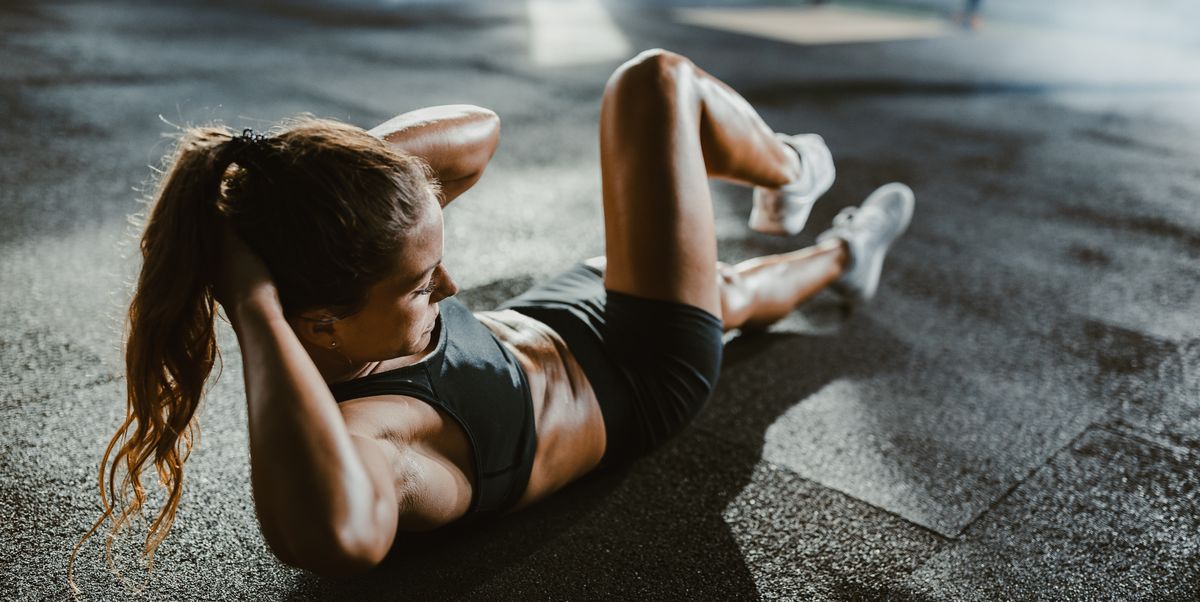Setting out to reduce body fat and build muscle at the same–otherwise known as changing your body composition–is among the most common goals for fitness newbies and gym fanatics alike. Adjusting this tissue ratio without major changes in weight can lead to better performance, health and aesthetics.
However, general advice of “strength training and eating protein” will only get you so far. You can expect a certain amount of trial and error, especially when age, hormones, and genetics all play a role.
One coach who’s been there is Tara LaFerrara, a PT with over 12 years experience–and who inadvertently achieved body recomposition over six years. “I didn’t do this on purpose,” she admits. “But things started to shift when I focused on these things.”
5 body recomposition tips
1. Strength train 3-4 times per week
“Body recomposition starts with building muscle, and strength training is where the magic happens,” says LaFerrara. “It’s not about doing endless cardio–it’s about challenging your body with weights, focusing on proper form, and progressively getting stronger.” Ways to overload progressively include adjusting your intensity (the amount of weight lifted), the volume (number of reps performed) or tempo (the speed you perform each rep).
2. Eat enough protein
“Protein is the key to building muscle and recovering from strength workouts,” confirms LaFerrara. “I used to underestimate how much I needed, but now I aim for 0.8–1g of protein per pound (or 1.8-2.2g per kg) of body weight daily.” She adopts a food-first approach – “Think lean meats, eggs, fish, Greek yogurt” – but also recommends “a good protein shake” when supplementation is needed.
3. Walk 8-12k steps per day
“Your workouts are important, but what you do outside the gym matters so much!” insists LaFerrara. “Walking is one of the most underrated tools for burning fat, improving recovery, and keeping your metabolism going.” Studies are now suggesting 4k steps may be all you need, while the NHS highlights the benefits of even a 10-minute daily walk, so if you can’t get your full 8k, lacing up and getting outside even for a little bit could help you make strides towards your recomposition goals.
Want more walking inspo? Get the exclusive 4-week walking plan when you join the WH+ community.
4. Don’t miss mobility or warm-ups
Skipping warm-ups used to be LaFerrara’s thing, “until I realised that they were non-negotiable for staying injury-free and lifting better.” Mobility is defined as the ability to actively achieve extended ranges of motion. Mobility work “preps your joints, muscles, and nervous system for the workout ahead” by focusing on exercises that improve joint flexibility and function.
These exercises therefore reduce your risk of injury by “taking a joint through controlled ranges. This will give you greater use of soft tissue, making you able to dissipate forces across more muscle, therefore reducing the stress on a muscle,” says Elite Third Space London PT, Andy Vincent.
Common warm-up movements include thread the needles, quadruped hip rocks, lunges with overhead reach and Cossack squats.
5. Rest
Actually recover on rest days. “Rest days don’t mean you’re lazy – they’re where the gains happen,” explains LaFerrara. “Your body needs time to recover and rebuild from all the hard work you’re putting in. I used to overdo it, thinking more was better, but now I honor my rest days every Thursday and Sunday.” She admits: “This was the hardest lesson for me to learn.”
LaFerrara reminds us that “body recomposition isn’t about quick fixes or crash diets. It’s about sustainable habits, consistency, and trusting the process. If I can figure this out over six years, you can absolutely start seeing results by sticking to these five steps.”

Read the full article here







